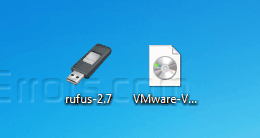
So make sure when configuring host to keep this in mind when going above 512GB of memory.

You may wonder what the reason is, the reason for this is that VSAN will use the core dump partition to store VSAN traces that can be used by VMware Global Support Services and the VMware Engineering team for root cause analysis when needed. In the new command line window that opens, to determine the USB flash drive number or drive letter, at the command prompt, type list disk, and then click ENTER. Open a Command Prompt window as an administrator.
CREATE ESXI USB BOOT DISK CRACKED
Minimum size for USB/SD card is 4GB, recommended 8GB. Hi guys, I have been messing around with an old Lenovo x220 laptop with the intent of making a stable, low power, XPEnology NAS and seemed to have cracked it. ** Update, as of November 21st we also support SD/USB boot with higher memory configurations when core dump partition is increased. Just to make it a bit easier to find it I copied/pasted it here for your convenience: Use SD, USB, or hard disk devices as the installation media whenever ESXi hosts are configured with as much as 512GB memory.


 0 kommentar(er)
0 kommentar(er)
